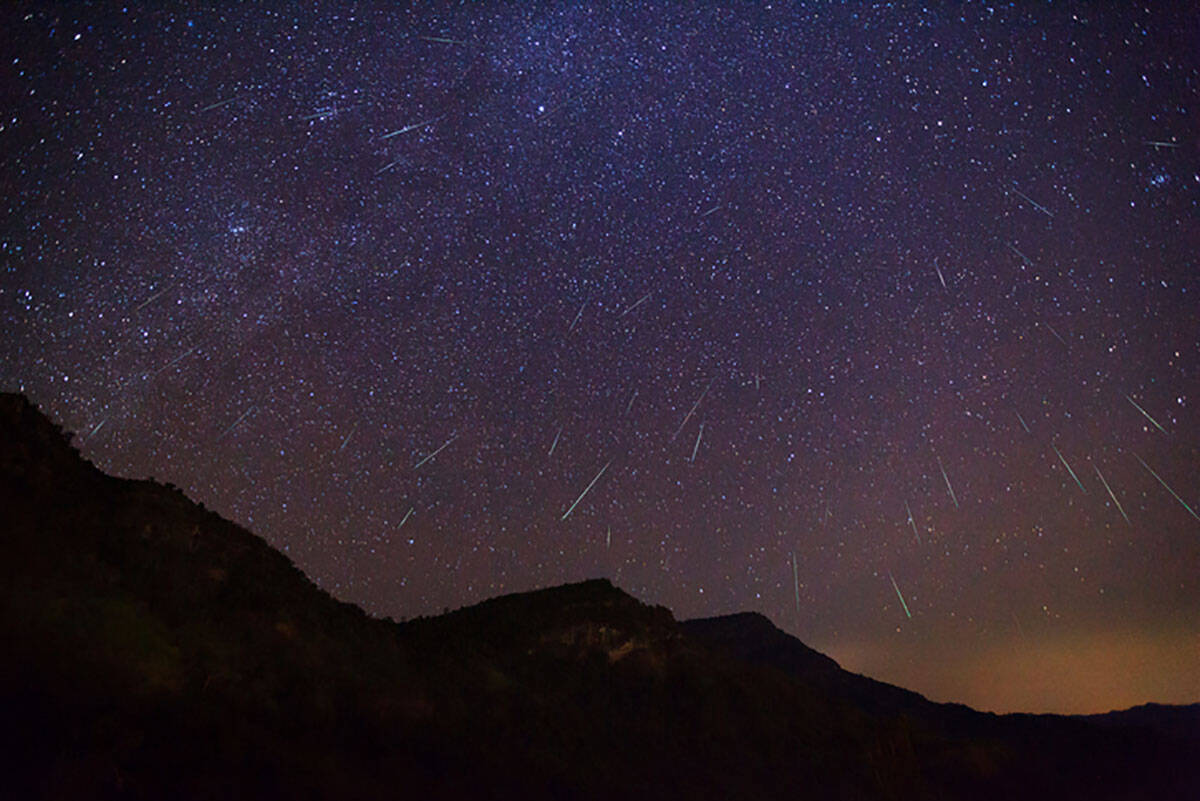Supermoon, meteor shows in Las Vegas may cancel each other out
Conflicting night sky shows later this week will likely pose a visibility problem for astronomy fans — too much light and perhaps too many clouds.
Light from the fourth and last supermoon of the year on Thursday is likely to hamper the number of meteors you might see during the peak of the annual Perseid meteor shower Thursday and Friday. (The annual show runs from mid-July to late August).
The Perseids meteor shower brings 50 to 100 “shooting stars” per hour at its peak. The meteors are caused by Earth passing through bits of ice and rock left behind by Comet Swift-Tuttle which orbits the sun every 133 years and last passed close to Earth in 1992. The Perseids peak when Earth passes through the densest and dustiest area on Aug. 11-12.
“Most of us in North America would normally see 50 or 60 meteors per hour,” said NASA astronomer Bill Cooke. “Sadly, this year’s Perseids peak will see the worst possible circumstances for spotters. During the normal peak, the full moon will reduce that to 10-20 per hour at best.”
NASA said that this year is not the best year to make a special trip to see the Perseids, but if you find yourself outside between midnight and dawn on Aug. 13 you should look up anyway.
The fourth and final supermoon of 2022, known as the Sturgeon Moon, will occur Thursday. The moon rises at 7:56 p.m. in Las Vegas, and it’s best to see any supermoon as it rises.
Look to the southeastern sky to see the supermoon shining about a slim palm’s width to the lower right (or 5 degrees to the celestial south) of Saturn, says astronomer Chris Vaughan.
The weather forecast is also a problem. It is expected to be mostly cloudy over Las Vegas on Thursday evening, says the National Weather Service.
Contact Marvin Clemons at mclemons@reviewjournal.com. Follow @Marv_in_Vegas on Twitter.























